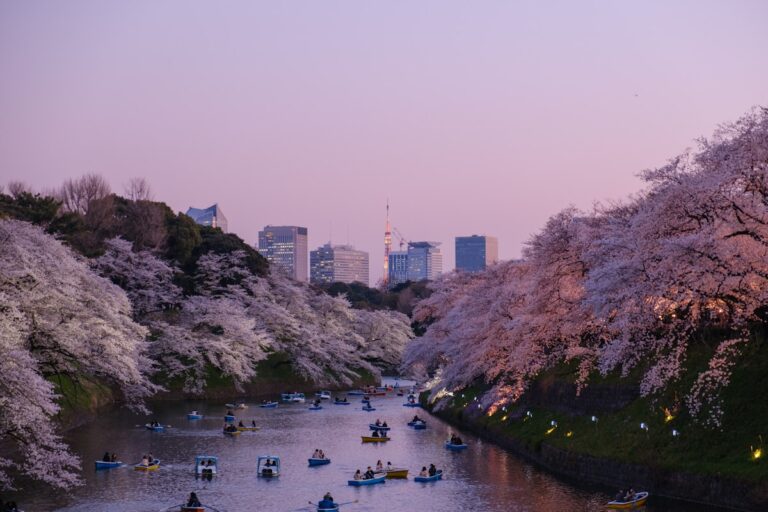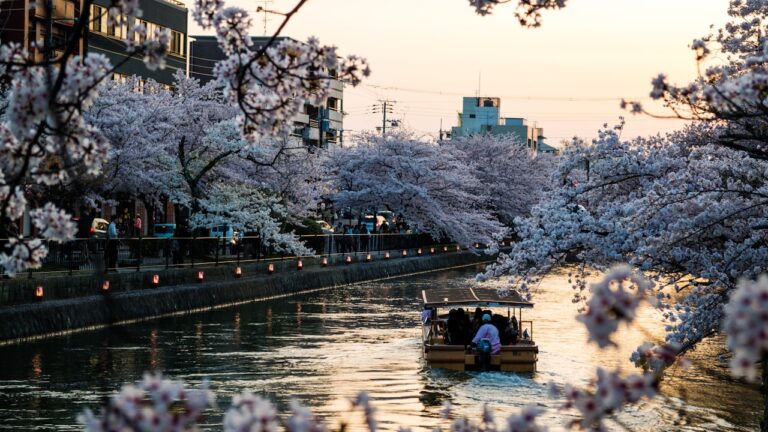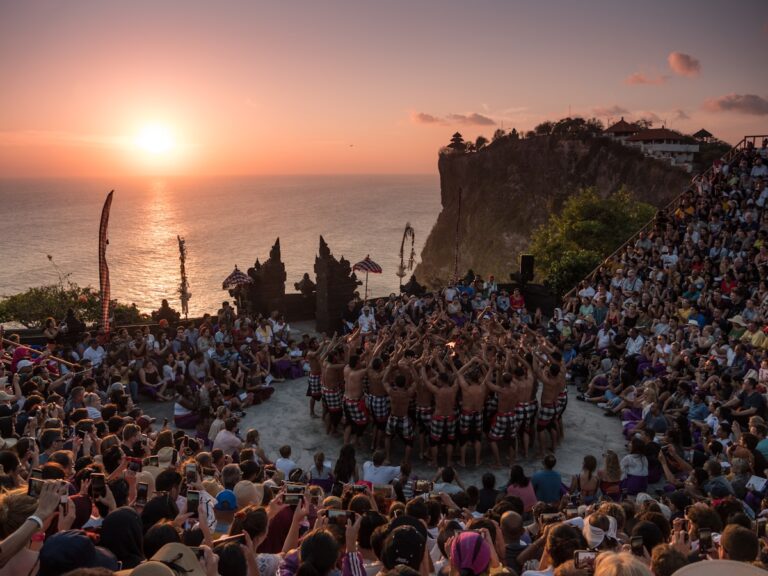Top Free Things to Do in Seoul

Seoul captivates visitors with an abundance of cost-free attractions. The city seamlessly blends ancient traditions with modern vibrancy, offering cultural immersion without financial burden.
- Explore Historic and Cultural Landmarks for Free
- Enjoy Free Outdoor Activities and Scenic Walks
- Experience Seoul's Free Museums and Art Spaces
- Enjoy Free Entertainment and Unique Experiences
- Explore Seoul's Famous Markets Without Spending
- Find Hidden Gems and Non-Touristy Spots in Seoul
- Best Free Things to Do in Seoul for a Relaxing Experience
- Unusual and Unique Free Things to Do in Seoul
- Wrapping Up
Travelers can wander through centuries-old palaces, explore tranquil streams cutting through urban landscapes, or discover bustling markets filled with local flavors.
From mountain hikes with panoramic city views to contemporary art exhibitions, Seoul proves that experiencing a world-class metropolis doesn’t require opening one’s wallet. The adventure awaits.
Key Takeaways:
Hide- Visit Gyeongbokgung Palace to witness the free Changing of the Guard ceremony three times daily (except Tuesdays) 🏯🎖️🎺
- Explore Bukchon Hanok Village's 900+ traditional houses connected by stone pathways at no cost 🏘️🪨🚶♂️
- Stroll along Cheonggyecheon Stream's 11-kilometer urban sanctuary featuring cultural performances and evening light shows 🌆🎭🌊
- Experience Seoul's vibrant culture through free street performances in Hongdae, especially on weekends 🎶🕺🎨
- Take advantage of free walking tours with local guides who share cultural insights about Seoul's historic districts 🧑🏫👟📚
Explore Historic and Cultural Landmarks for Free
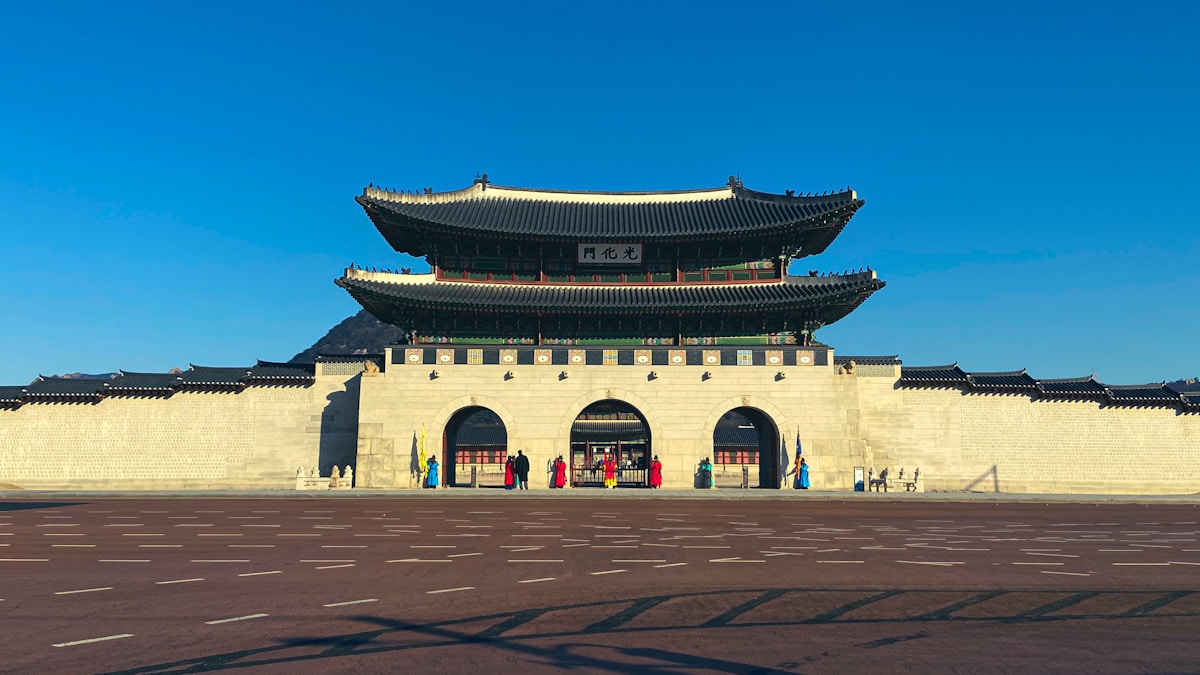
Seoul offers budget-conscious travelers numerous opportunities to explore its rich history without spending a dime.
Visitors can wander through Gyeongbokgung Palace during designated free entry hours, immersing themselves in the grandeur of Korea’s royal heritage.
The nearby Bukchon Hanok Village showcases traditional Korean architecture through its maze-like alleys, while Jogyesa Temple provides a tranquil sanctuary amid the bustling capital city.
Visit Gyeongbokgung Palace During Free Entry Hours
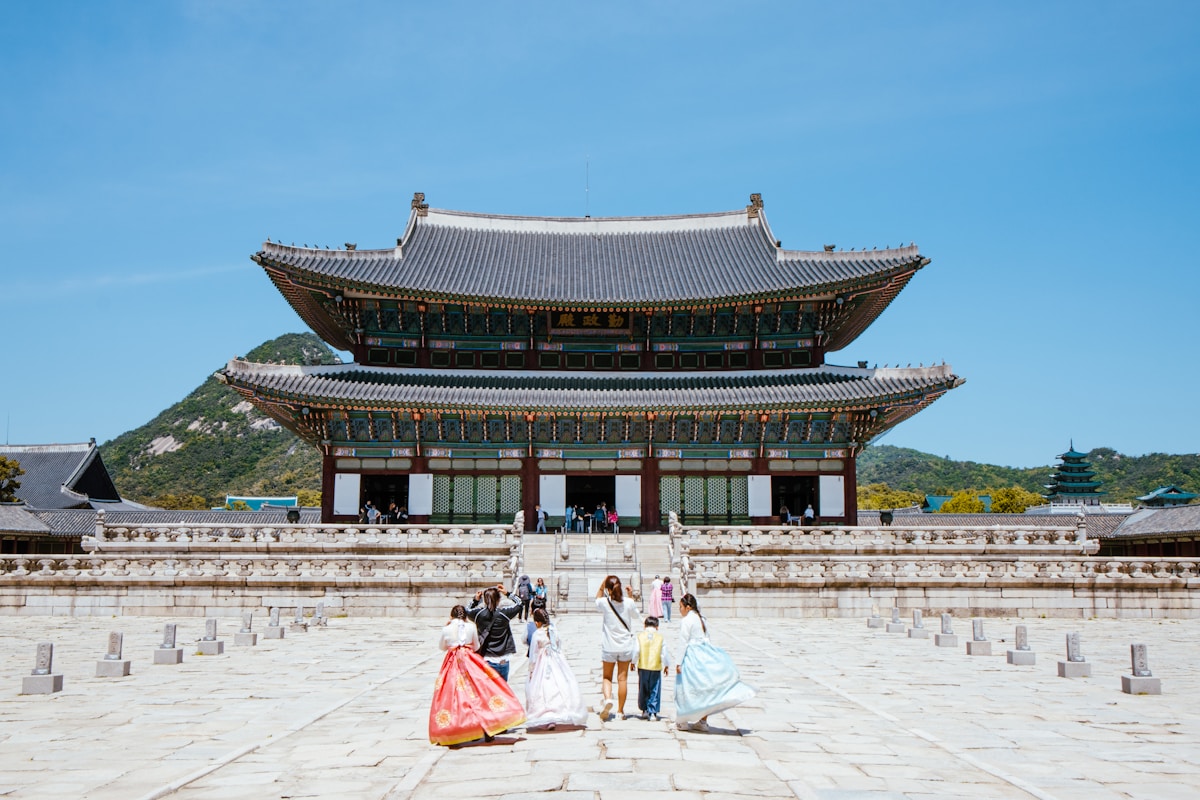
Travelers can witness the spectacular Changing of the Guard ceremony outside Gyeongbokgung Palace’s main gate, a colorful recreation of Joseon Dynasty traditions performed several times daily at no cost.
Even without purchasing an admission ticket, visitors can still explore portions of the palace grounds, including the magnificent courtyard and outer gardens where Seoul’s history comes alive through traditional architecture.
These free experiences offer an authentic glimpse into Korea’s royal heritage while providing stunning photo opportunities against the backdrop of mountains and meticulously maintained palace structures.
1. Changing of the Guard Ceremony Outside the Main Gate
One of Seoul’s most spectacular free cultural performances takes place three times daily outside Gyeongbokgung Palace’s imposing Gwanghwamun Gate.
This enthralling ceremony ranks among Seoul’s famous places that visitors can enjoy without spending a won.
- Colorfully-dressed guards perform intricate military drills
- Photography opportunities abound with guards in traditional Joseon-era uniforms
- Perfect timing at 10:00, 14:00, and 16:00 (except Tuesdays)
2. Exploring the Palace Grounds Without an Admission Ticket
After witnessing the spectacular changing of the guard ceremony, visitors can extend their cultural journey by exploring Gyeongbokgung Palace itself completely free of charge during special admission periods.
For those seeking a unique’s top things to do in Seoul beyond typical tourist attractions, these free walking tours provide authentic glimpses into Korean heritage.
The palace grounds offer non-touristy things to do in Seoul while experiencing centuries of history undisturbed.
Walk Through Bukchon Hanok Village
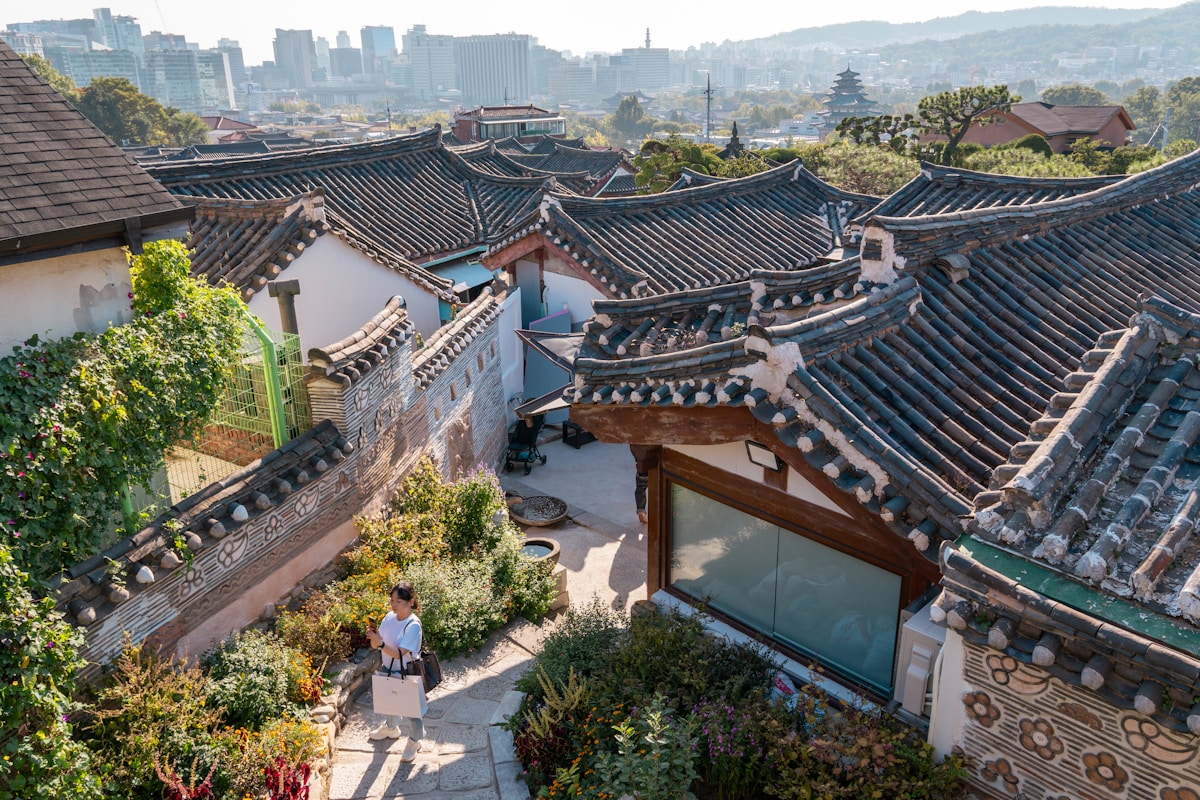
Nestled between Gyeongbokgung and Changdeokgung palaces, Bukchon Hanok Village offers visitors a free glimpse into Seoul’s traditional architecture with its well-preserved hanok houses and winding stone pathways.
Photography enthusiasts can capture stunning views of curved tile rooftops against the modern city skyline, particularly from the elevated viewpoints along the hillside neighborhood.
Savvy travelers should explore the quieter back alleys early in the morning or on weekdays to escape the crowds and discover peaceful courtyards where locals still maintain their daily routines among these 600-year-old residences.
1. Traditional Korean Houses and Scenic Alleyways
Stepping into Bukchon Hanok Village transports visitors back through centuries of Korean history without costing a single won.
This preserved neighborhood showcases traditional Korean architecture between Gyeongbokgung and Changdeokgung Palaces.
- Photograph iconic curved tile roofs against Seoul’s modern skyline
- Wander narrow stone pathways connecting over 900 hanok houses
- Discover hidden teahouses and craft workshops tucked within the village
2. Best Photo Spots and Quiet Corners Away From Crowds
While thousands of tourists flock to Bukchon’s main streets, savvy photographers and solitude-seekers can discover hidden treasures within this historic neighborhood by venturing just a few steps off the beaten path.
Tucked between Gahoe-dong alleys, peaceful courtyards offer uninterrupted views of traditional rooftops against Seoul’s modern skyline, perfect for contemplative moments and striking photographs without admission fees.
Experience Jogyesa Temple’s Peaceful Atmosphere
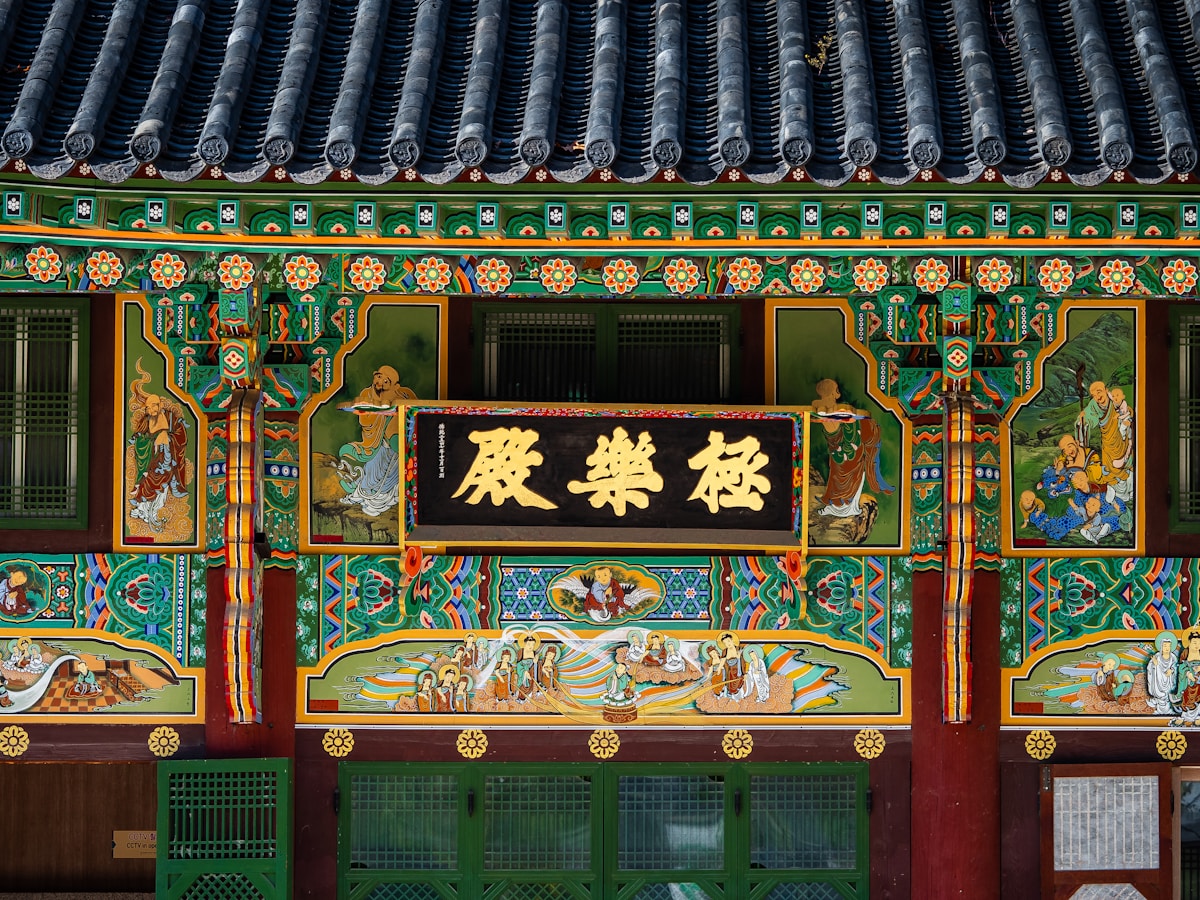
Jogyesa Temple offers visitors a serene escape from Seoul’s bustling streets with its lively lantern displays and centuries-old Buddhist traditions.
The temple welcomes everyone free of charge to admire its spectacular 500-year-old pine tree, ornate main hall, and colorful decorations that change with the seasons.
During festivals like Buddha’s Birthday in spring, thousands of illuminated lanterns transform the temple grounds into a breathtaking spectacle that showcases Korea’s living Buddhist heritage.
1. A Look at Buddhist Culture and Stunning Lantern Displays
The heart of Seoul’s Buddhist heritage awaits at Jogyesa Temple, a serene sanctuary amid the bustling cityscape where visitors can immerse themselves in centuries of spiritual tradition without spending a single won.
- Marvel at luminous lantern displays during Buddha’s Birthday celebrations in May.
- Observe monks performing daily ceremonies and chanting rituals.
- Photograph the ancient juniper trees, over 500 years old, flanking the main hall.
2. Seasonal Events and Open Access to Visitors
Throughout the year, Jogyesa Temple opens its gates to visitors seeking cultural immersion without financial burden, offering an ever-changing calendar of seasonal festivities that transform this spiritual haven.
From spring’s lively Buddha’s Birthday celebrations to autumn’s Lantern Festival, the temple welcomes all to witness centuries-old traditions.
Visitors can freely observe morning chanting ceremonies or join meditation sessions, exceptional experiences that cost nothing but time.
Enjoy Free Outdoor Activities and Scenic Walks
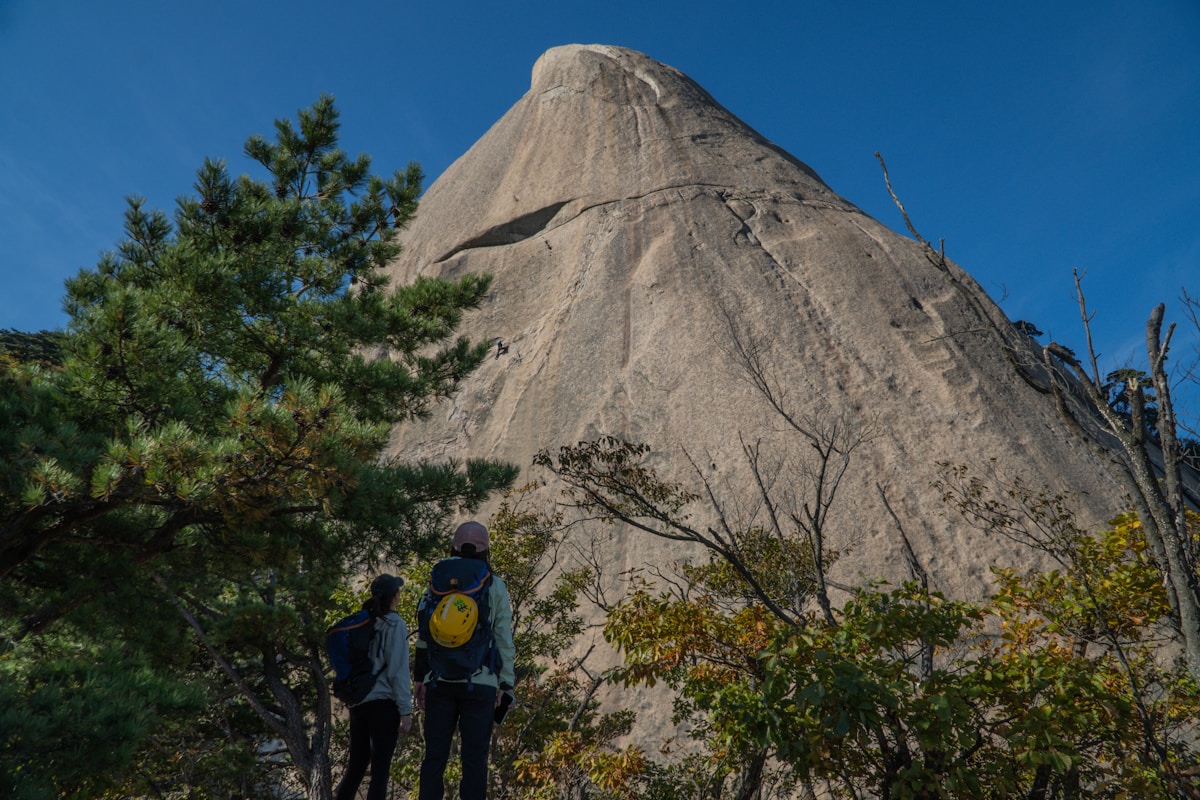
Seoul offers numerous free outdoor activities for those seeking fresh air and panoramic perspectives.
Visitors can stroll along the revitalized Cheonggyecheon Stream which flows through downtown, offering a peaceful urban oasis complete with art installations and seasonal events.
For those craving elevation, Namsan Mountain provides breathtaking city vistas after a moderate hike, while the expansive Han River Parks feature cycling paths, recreational spaces, and spectacular sunset views against Seoul’s metropolitan skyline.
Take a Leisurely Walk Along the Cheong-gye-cheon Stream
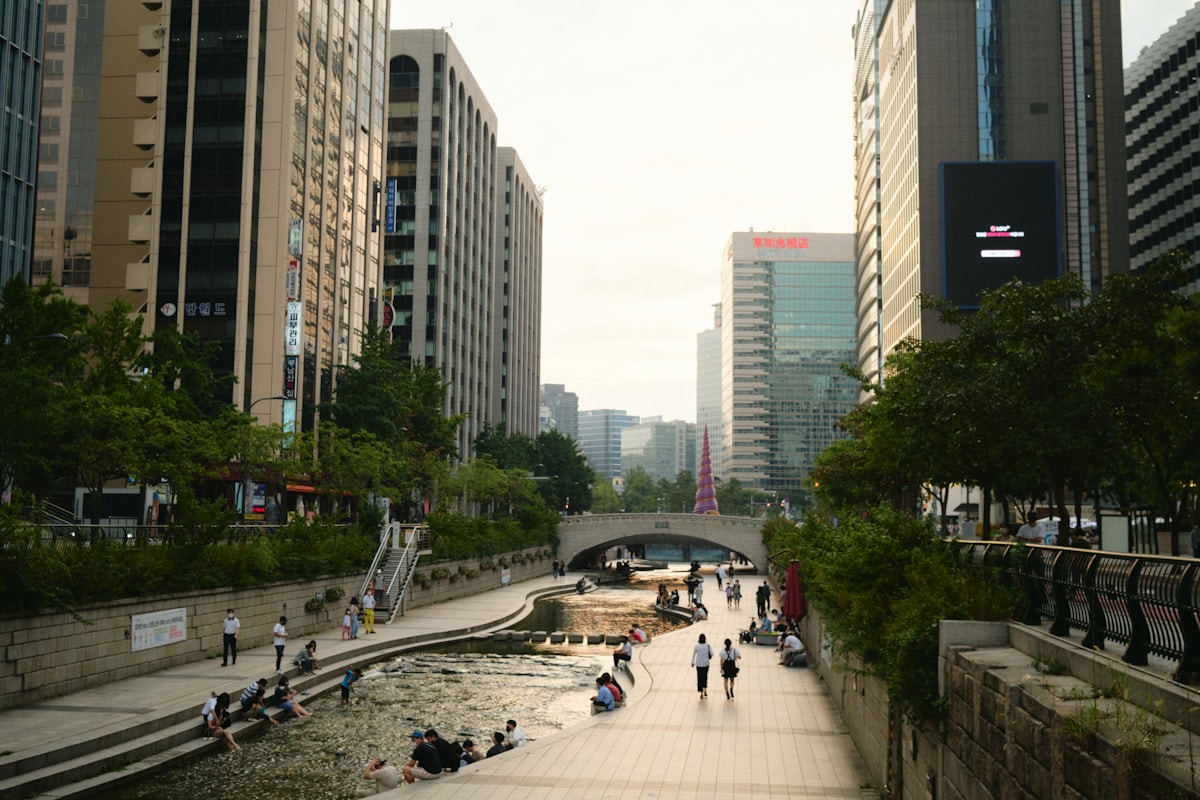
Meandering through downtown Seoul, the Cheong-gye-cheon Stream represents an ambitious urban renewal project that transformed a concrete-covered waterway into a lively 11-kilometer sanctuary.
Visitors can escape the city’s bustle by following stone pathways alongside cascading waterfalls, artistic installations, and historic bridges that illuminate the stream’s rich cultural significance.
As evening approaches, the entire waterway transforms with colorful LED displays, while seasonal festivals throughout the year feature lantern exhibitions, flower shows, and cultural performances that showcase Seoul’s artistic heritage.
1. A Restored Urban Oasis in the Middle of the City
Hidden beneath layers of urban development for decades, the Cheong-gye-cheon Stream has been transformed into one of Seoul’s most beloved public spaces.
This 11-kilometer urban renewal project offers visitors:
- Tranquil walking paths lined with willow trees and seasonal flowers
- Evening light shows reflecting off the water’s surface
- Frequent cultural performances and art installations celebrating Korean heritage
2. Nighttime Light Displays and Seasonal Festivals
The Cheong-gye-cheon Stream truly comes alive after sunset, transforming into a dazzling display of illuminated pathways and colorful light installations that dance across the water’s surface.
Year-round, Seoul organizes free festivals featuring stunning lantern displays, seasonal projections, and cultural performances.
These lively celebrations showcase Korean artistic traditions while offering visitors an enchanting nighttime experience without spending a single won.
Hike Up Namsan Mountain for Stunning City Views
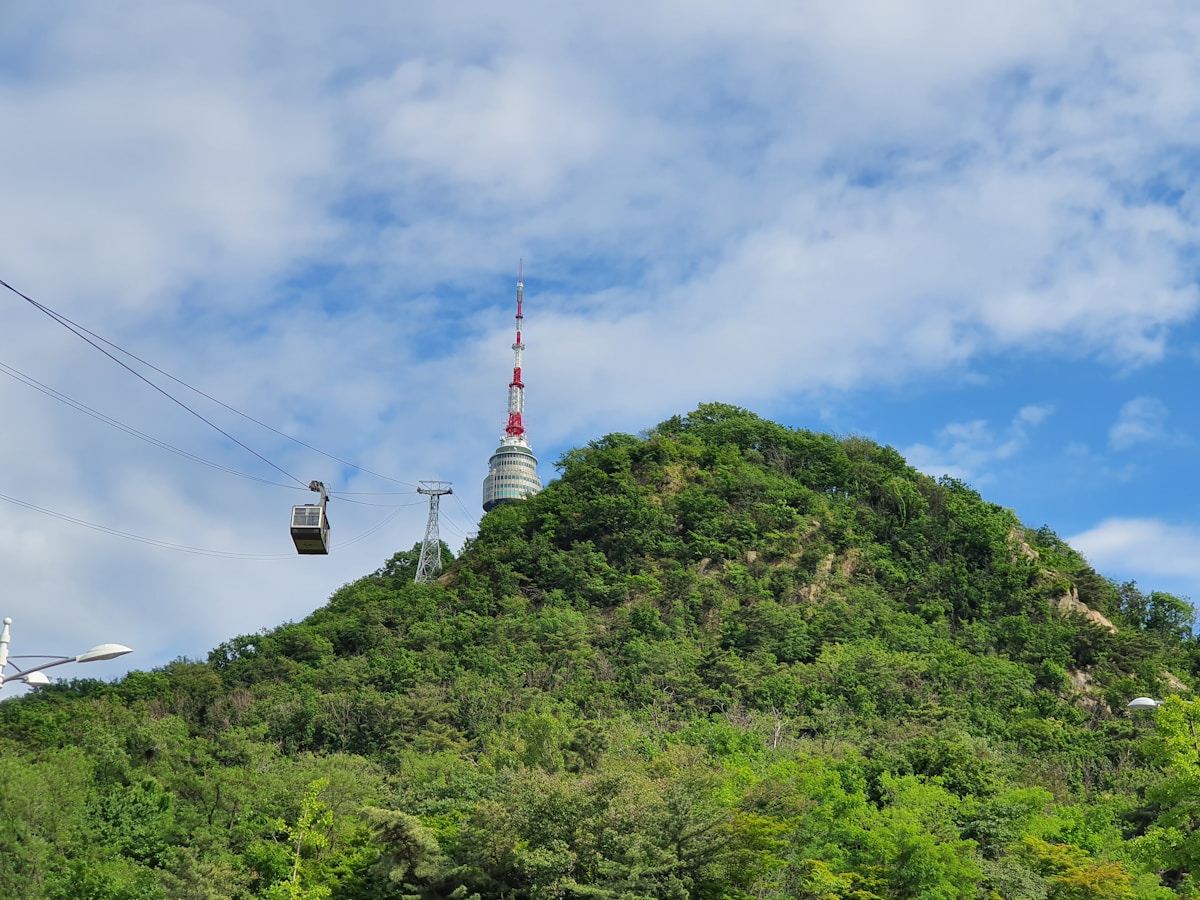
Namsan Mountain offers a network of well-maintained free trails that wind their way up to the base of the iconic N Seoul Tower.
Morning hikers are rewarded with crisp, clear views of Seoul’s sprawling skyline, while evening climbers witness the city transform into a dazzling sea of lights.
Photographers and nature enthusiasts should aim for weekday visits during spring or fall when crowds thin out and the cityscape views remain unobstructed by summer haze.
1. Free Trails Leading to N Seoul Tower’s Base
While many tourists opt for the cable car to reach N Seoul Tower, Seoul’s network of free hiking trails offers an equally rewarding journey to the iconic landmark’s base.
- Namsan Circular Trail provides a gentle ascent with abundant flora and occasional wildlife sightings.
- Mongmyeok Trail features historical sites including remnants of Seoul’s ancient fortress walls.
- Baekbeom Trail offers the most direct route with strategically placed rest areas and panoramic viewpoints.
2. Best Times to Visit for a Clear View of Seoul’s Skyline
Once hikers reach the base of N Seoul Tower via the scenic trails, timing becomes a key factor in maximizing the panoramic experience.
Early mornings offer crystal-clear views before city smog accumulates, while sunset transforms the skyline into a golden spectacle.
Winter months surprisingly provide the sharpest vistas when cold winds clear pollutants, revealing Seoul’s sprawling urban landscape in its unfiltered glory.
Explore the Han River Parks
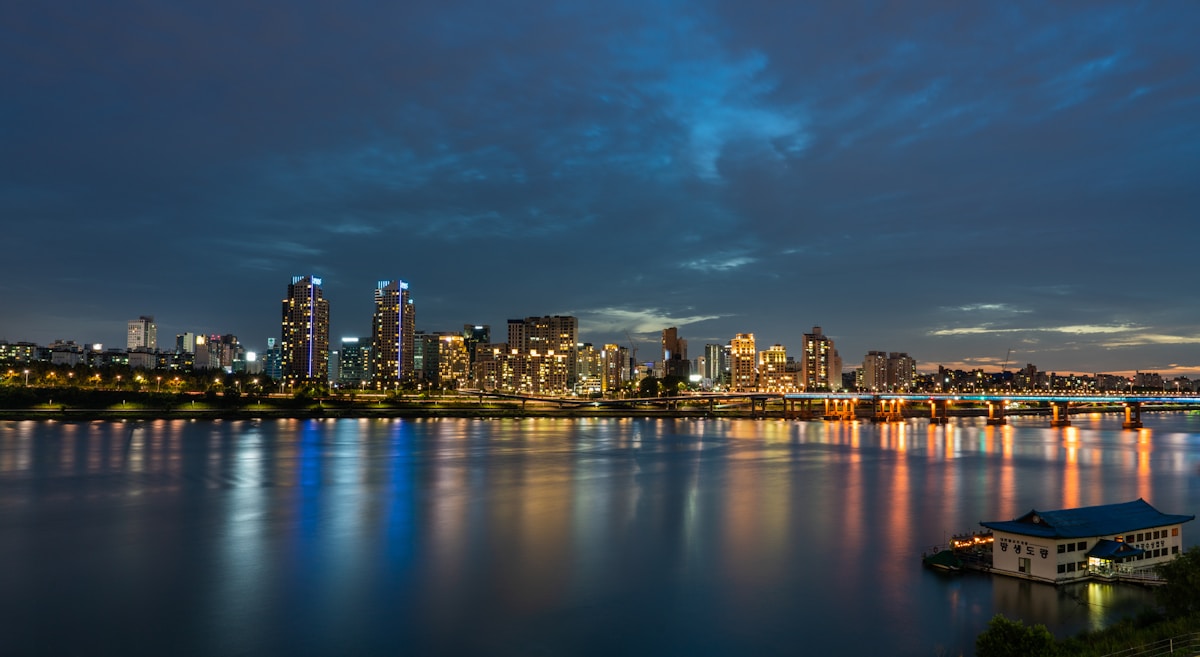
The Han River parks stretch for miles along Seoul’s iconic waterway, offering visitors free access to scenic paths perfect for biking, picnicking, or simply relaxing by the water.
During summer evenings, these riverside sanctuaries transform with free cultural performances and lively night markets that showcase local food and crafts.
Tourists and locals alike can rent affordable bicycles to traverse the extensive network of paths, or simply spread a mat on the grass to enjoy spectacular cityscapes as the sun sets behind Seoul’s skyline.
1. Biking, Picnicking, and Relaxing by the Water
Stretching along both sides of Seoul’s iconic waterway, Han River Parks offer visitors free access to some of the city’s most invigorating outdoor spaces.
The riverside havens provide perfect settings for:
- Cycling along dedicated bike paths with rental stations offering affordable hourly rates
- Spreading picnic mats beneath cherry blossoms or autumn foliage depending on the season
- Watching spectacular water fountain shows at Banpo Bridge during summer evenings
2. Free Performances and Night Markets in Warmer Months
When warm weather embraces Seoul from late spring through early fall, Han River Parks transform into lively cultural hubs featuring free outdoor performances and bustling night markets.
Visitors can enjoy live music, dance shows, and film screenings under starlit skies.
The Bamdokkaebi Night Market offers local street food, handmade crafts, and artistic performances, all without spending a penny unless desired.
Experience Seoul’s Free Museums and Art Spaces
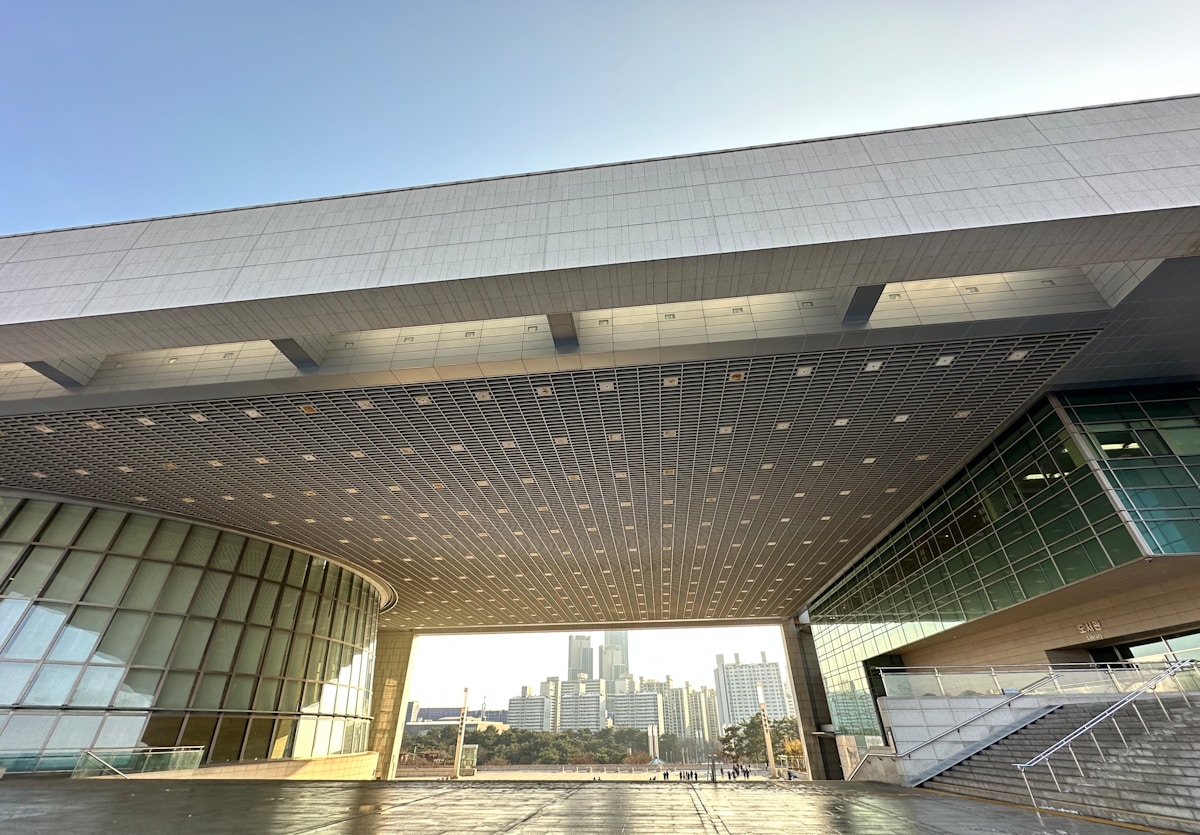
Seoul offers culture enthusiasts remarkable opportunities to explore its lively artistic heritage without spending a won.
Visitors can wander through the Seoul Museum of History’s enlightening collections, marvel at exquisite traditional crafts at the Seoul Museum of Craft Art, or immerse themselves in Korea’s rich cultural past at the National Folk Museum.
These free cultural institutions provide illuminating windows into Korean identity, showcasing everything from ancient artifacts to contemporary artistic expressions.
Browse the Exhibits at the Seoul Museum of History
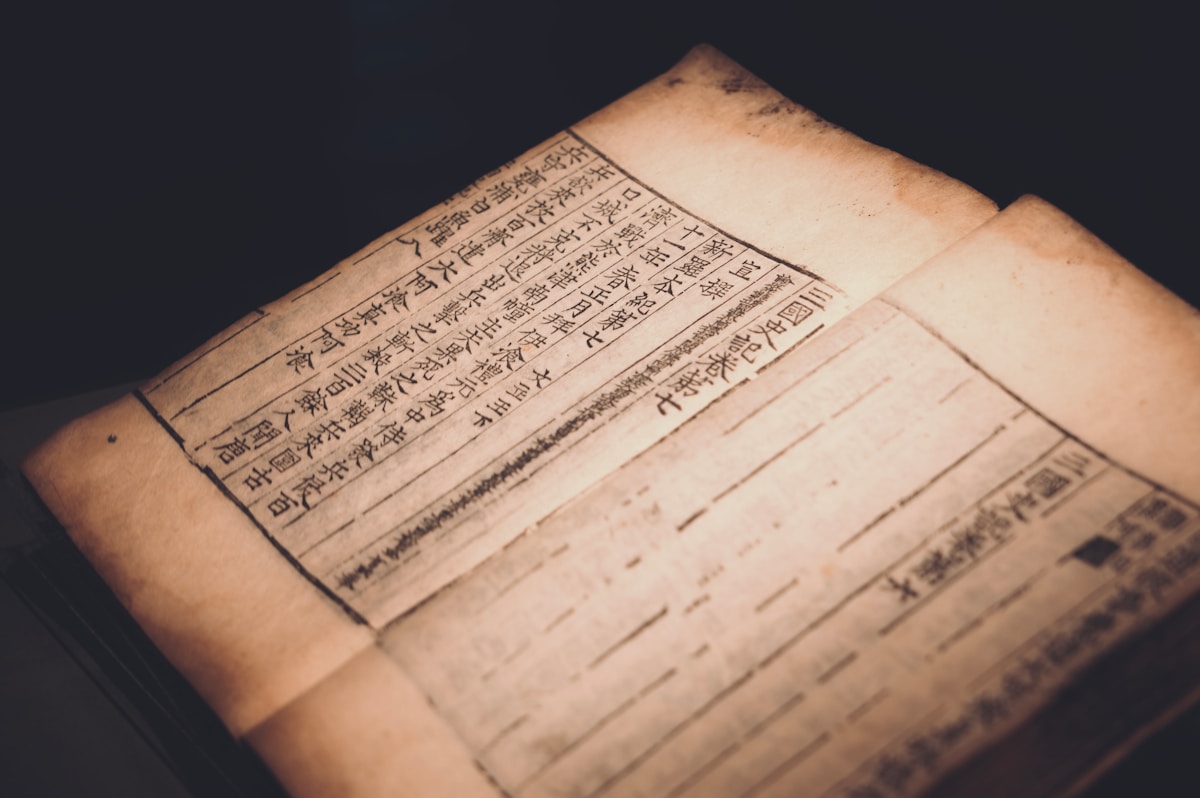
The Seoul Museum of History offers visitors a fascinating journey through the capital’s evolution with its extensive interactive displays that bring centuries of urban development to life.
Free guided tours, available in multiple languages, provide expert insights into Seoul’s transformation from ancient walled city to modern metropolis.
History enthusiasts should check the museum’s calendar for special events and temporary exhibitions that frequently showcase rare artifacts and photographs from the city’s archives.
1. Learning About the City’s Past Through Interactive Displays
Stepping through the doors of the Seoul Museum of History transports visitors back in time, offering an enchanting journey through the Korean capital’s rich historical tapestry.
The museum’s interactive displays engage history enthusiasts with:
- Digital recreations of ancient Seoul neighborhoods
- Touch-screen exhibits revealing layers of architectural evolution
- Hands-on archaeological activities where visitors unearth artifacts from different eras
2. Free Guided Tours and Special Events
Visitors seeking deeper insights into Korean heritage can enhance their museum experience through complimentary guided tours offered multiple times daily at the Seoul Museum of History.
These expert-led explorations illuminate Seoul’s evolution from ancient fortress to modern metropolis. Additionally, the museum hosts special seasonal events including traditional music performances and hands-on cultural workshops, all entirely free to the public.
Appreciate Craftsmanship at the Seoul Museum of Craft Art
The Seoul Museum of Craft Art showcases an exquisite collection of traditional and contemporary Korean handicrafts that highlight the nation’s rich artisanal heritage.
Visitors can marvel at meticulously crafted ceramics, textiles, metalwork, and wood art that represent centuries of Korean craftsmanship techniques passed through generations.
The museum regularly refreshes its offerings with rotating exhibitions featuring talented local artists, providing cultural enthusiasts a constantly evolving glimpse into Korea’s dynamic craft scene.
1. Traditional and Contemporary Korean Handicrafts on Display
Intricate celadon vases, delicate hanji paper crafts, and contemporary ceramic installations come to life at the Seoul Museum of Craft Art, where Korea’s rich artisanal heritage meets modern innovation.
Visitors can freely explore:
- Rotating exhibitions featuring both traditional masters and emerging artists
- Hands-on demonstrations of ancient techniques by skilled artisans
- Special collections highlighting regional craft styles from across the peninsula
2. Rotating Exhibitions Featuring Local Artists
While seasoned art enthusiasts might recognize established names, Seoul Museum of Craft Art’s rotating exhibitions create unique platforms for emerging local talent to showcase their innovative interpretations of traditional Korean craftsmanship.
These dynamic displays change quarterly, offering visitors fresh perspectives on contemporary Korean art without admission fees, a rare opportunity to witness the evolution of cultural expression unconstrained by commercial pressures.
Visit the National Folk Museum for a Glimpse Into Korean Traditions
The National Folk Museum showcases Korea’s rich cultural heritage through impressive open-air exhibitions featuring traditional houses, farming tools, and ceremonial artifacts that span centuries of Korean life.
Visitors can wander through meticulously recreated historical settings while examining authentic relics that offer insights into the everyday experiences of Koreans throughout different eras.
Families particularly appreciate the museum’s thoughtfully designed interactive learning spaces where children can try traditional games, craft simple folk art, and engage with Korea’s past through hands-on activities.
1. Open-Air Displays and Historic Artifacts
Nestled within the sprawling grounds of Gyeongbokgung Palace, Seoul’s National Folk Museum offers visitors a fascinating journey through Korea’s rich cultural heritage without costing a single won.
The museum’s open-air exhibition showcases:
- Meticulously reconstructed traditional homes spanning different historical periods
- Ancient agricultural tools and household artifacts illustrating everyday Korean life
- Stunning ceremonial objects highlighting cultural rituals and celebrations
2. Family-Friendly Spaces for Interactive Learning
Parents seeking educational yet entertaining experiences will find themselves drawn to the National Folk Museum’s dedicated family zones.
These innovative spaces encourage children to explore Korean traditions through hands-on exhibits and interactive displays.
Young visitors can try traditional games, craft simple folk artifacts, and engage with cultural storytelling sessions, all completely free of charge, making cultural enrichment accessible regardless of budget constraints.
Enjoy Free Entertainment and Unique Experiences
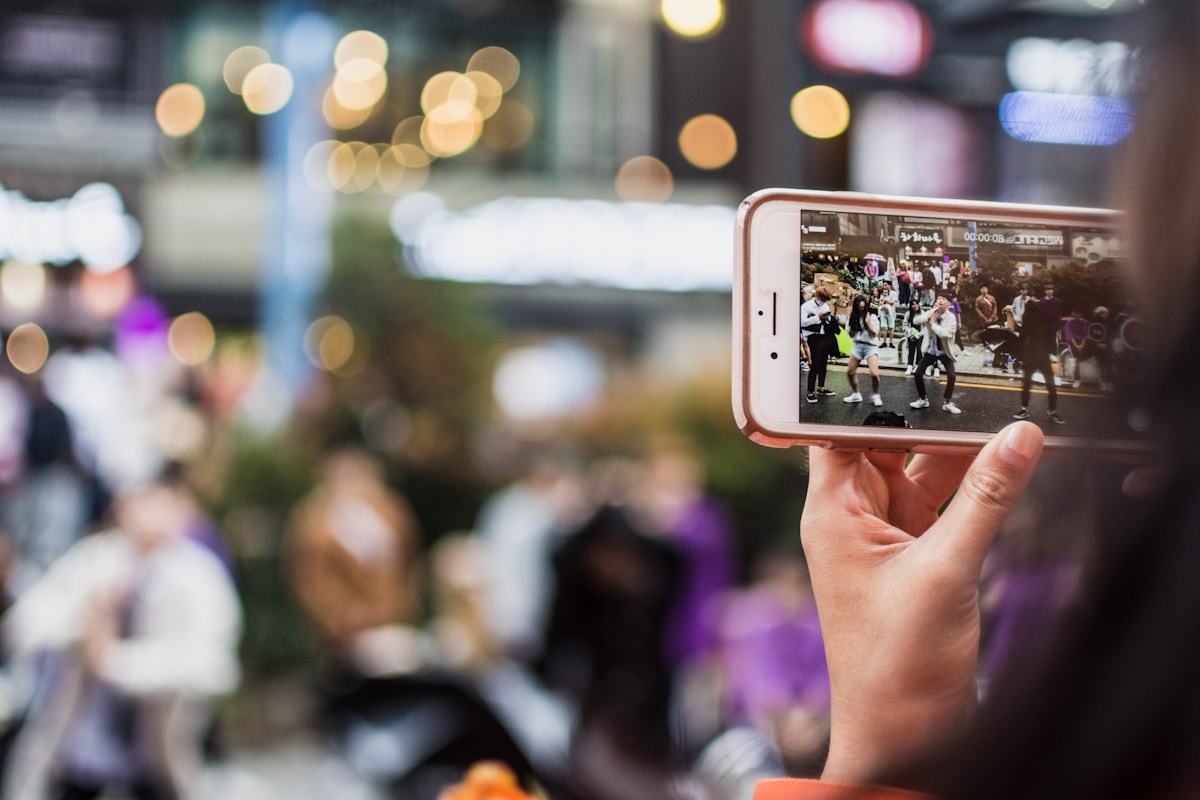
Seoul offers numerous free entertainment options that showcase the city’s lively cultural scene.
Visitors can join complimentary walking tours led by knowledgeable locals who illuminate the city’s rich history and hidden gems.
The youthful energy of Hongdae’s street performers and the immersive K-POP experience at COEX Mall’s dedicated square provide authentic glimpses into Korean contemporary culture without spending a won.
Join a Free Seoul Walking Tour
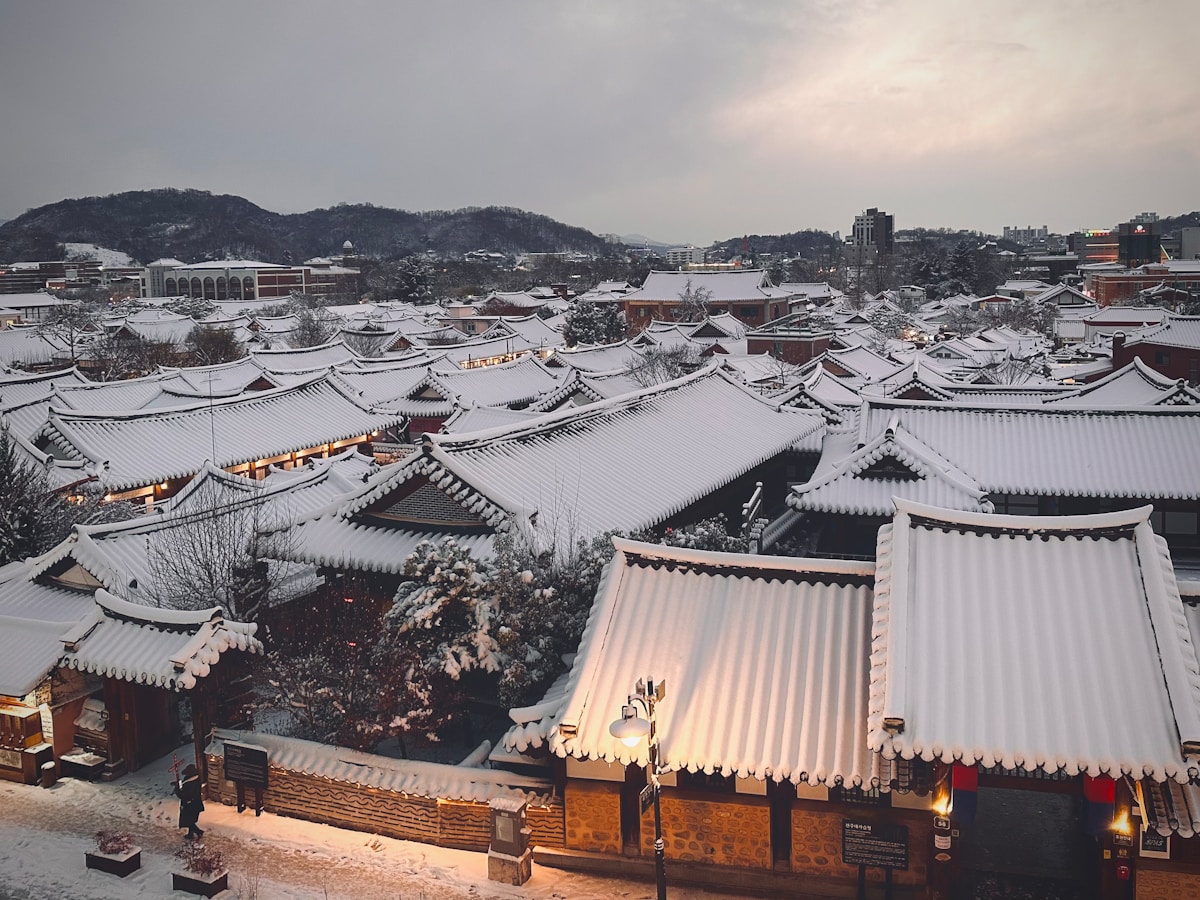
Seoul’s free walking tours offer a fantastic opportunity to explore historic districts like Bukchon Hanok Village and Gwangjang Market with knowledgeable local guides who share fascinating cultural insights.
Visitors can easily sign up through the Seoul Metropolitan Government’s official tourism website, selecting from various themed routes that operate multiple times daily.
These two-hour excursions typically accommodate 10-20 participants and require no payment, though a small gratuity for guides is appreciated for their enthusiastic and informative service.
1. Exploring Historic Districts With Local Guides
History comes alive when wandering Seoul’s ancient districts with knowledgeable local guides who volunteer their expertise through free walking tours.
These passionate locals illuminate hidden stories behind Seoul’s architectural treasures:
- Bukchon Hanok Village tours reveal traditional Korean housing amid modern skyscrapers.
- Seochon neighborhood walks uncover artistic heritage and royal connections.
- Ihwa Mural Village explorations showcase colorful street art transforming hillside communities.
2. How to Sign Up and What to Expect on the Tour
Joining these enlightening tours requires minimal effort but yields maximum cultural immersion.
Prospective participants can easily reserve spots by visiting Seoul’s official tourism website at least three days in advance. That’s why it’s important to discover the best day trips from Seoul.
Tours typically last 2-3 hours, with English-speaking guides sharing historical context and local insights.
Visitors should wear comfortable shoes, bring water, and prepare questions to fully engage with Seoul’s cultural tapestry.
Watch Street Performances in Hongdae

Hongdae’s lively streets transform into open-air stages where talented performers showcase everything from electrifying dance battles to soulful acoustic sessions and impromptu art installations.
Visitors can catch the most dynamic performances in Hongdae Playground and around Exit 9 of Hongdae Station, particularly on Friday and Saturday evenings when the area truly comes alive.
These free entertainment spectacles offer an authentic glimpse into Seoul’s youth culture and creative spirit while providing budget-conscious travelers with unforgettable experiences.
1. Live Music, Dance Battles, and Art Displays
The lively streets of Hongdae come alive each evening with an electrifying array of free performances that showcase Korea’s dynamic youth culture.
Visitors can immerse themselves in Seoul’s colorful artistic scene without spending a won:
- Impromptu K-pop dance battles where local performers showcase jaw-dropping choreography
- Underground musicians testing new sounds across genres from traditional to experimental
- Aspiring artists creating live installations and exhibiting works along pedestrian walkways
2. Best Times and Places to Catch Performances for Free
While Seoul’s lively performance scene flourishes throughout the week, strategic timing greatly enhances visitors’ chances of experiencing the most enthralling free entertainment in Hongdae.
Friday and Saturday evenings between 7-10 PM offer peak opportunities to witness dance battles and indie musicians near Hongik University’s entrance.
During warmer months, Hongdae Playground hosts regular showcases of Korea’s emerging artistic talent.
Visit K-POP Square in COEX Mall
K-POP Square inside the massive COEX Mall offers visitors an immersive Korean pop culture experience without spending a dime.
Music enthusiasts can marvel at the enormous LED screens displaying the latest chart-topping music videos from Korea’s biggest stars.
The interactive features throughout the square allow fans to engage with their favorite artists through digital experiences, making it a must-visit destination for K-pop enthusiasts and curious travelers alike.
1. Giant LED Screens Showcasing the Latest Music Videos
Music enthusiasts and casual visitors alike marvel at the dazzling spectacle of SM Entertainment’s giant LED screens in COEX Mall’s K-POP Square.
The immersive visual feast offers:
- Constant rotation of trending K-pop music videos in stunning high definition
- Live performance clips from iconic groups like BTS, BLACKPINK, and EXO
- Behind-the-scenes footage rarely seen elsewhere, creating exclusive viewing experiences
2. Interactive Features for K-Pop Fans
Beyond merely watching music videos, visitors to K-POP Square can immerse themselves in a range of interactive experiences designed to delight fans.
From dance recognition technology that scores visitors’ choreography attempts to AR photo zones featuring virtual K-pop idols, these free activities offer authentic engagement with Korean pop culture.
Monthly fan events often include surprise video messages from beloved artists.
Explore Seoul’s Famous Markets Without Spending
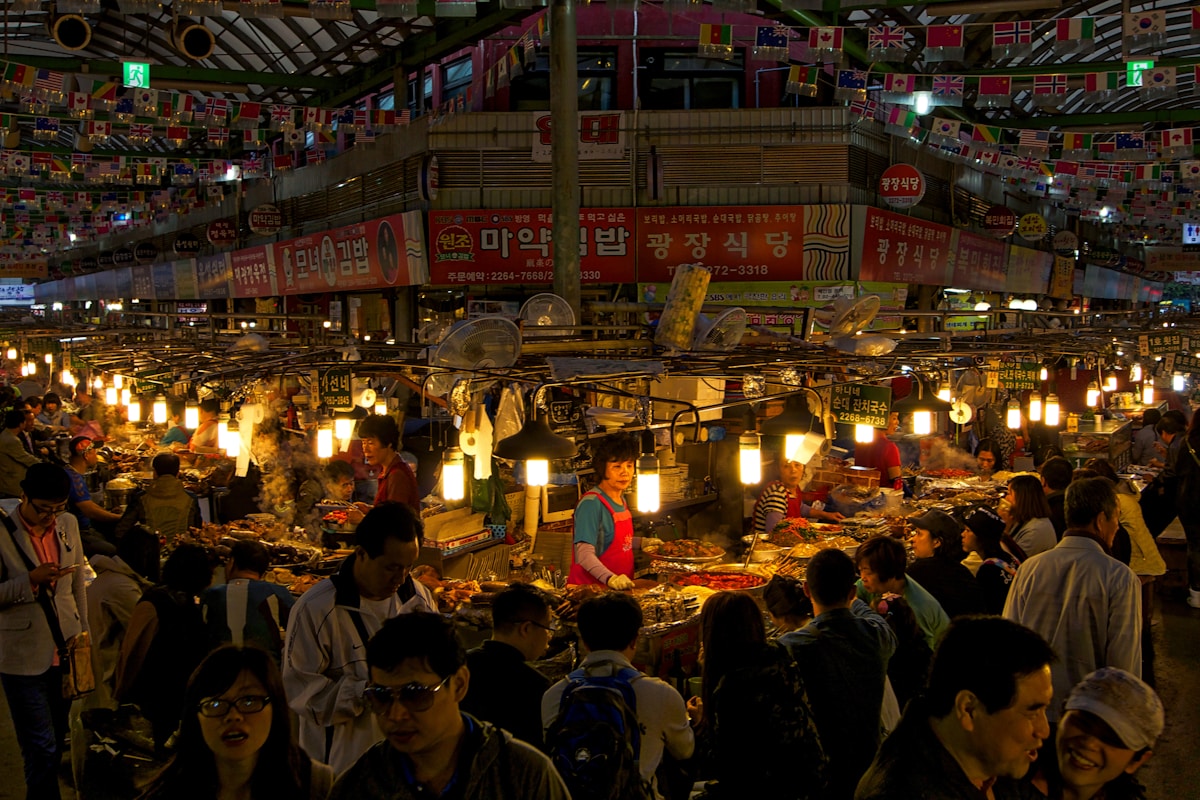
Seoul boasts lively markets that offer cultural immersion without requiring visitors to spend money.
At Gwangjang Market, travelers can absorb the authentic atmosphere as locals shop for textiles and savor traditional street food specialties.
Meanwhile, the historic Namdaemun Market invites exploration through its maze-like alleys packed with vendors selling everything from handicrafts to clothing, providing a sensory feast for those content with window-shopping.
Stroll Through Gwangjang Market for an Authentic Local Experience
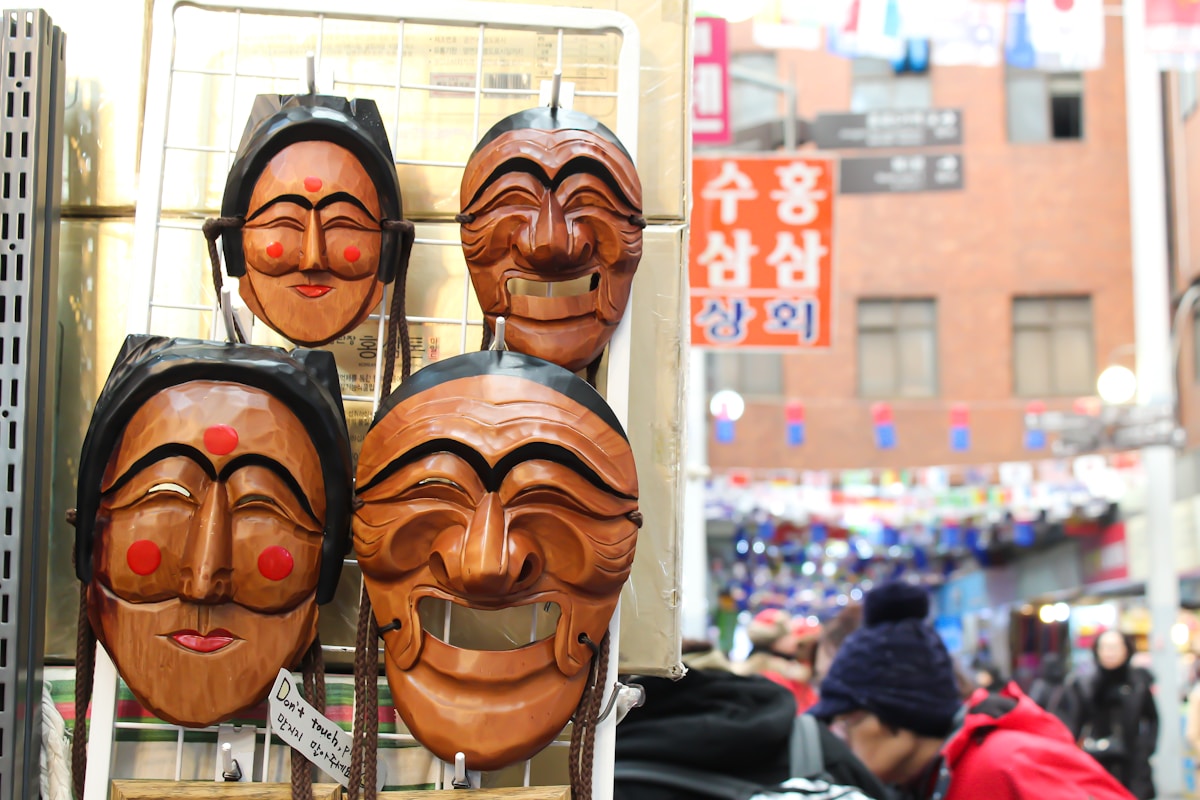
Gwangjang Market offers visitors a fascinating glimpse into authentic Korean culinary traditions as vendors skillfully prepare classics like bindaetteok and mayak gimbap right before your eyes.
Beyond the tantalizing food stalls, the market’s second floor houses an impressive collection of traditional textile merchants where lively silks and meticulously crafted hanboks showcase Korea’s rich fabric heritage.
Wandering through these aisles costs nothing yet provides an immersive education in Korean culture, from witnessing centuries-old cooking techniques to admiring the intricate craftsmanship of formal attire worn during special celebrations.
1. Observing Vendors Preparing Classic Korean Dishes
While the aroma of sizzling street food might lure visitors to spend money, simply watching the skilled vendors at Gwangjang Market creates an immersive cultural experience that costs nothing at all.
- Marvel at the rhythmic hand-cutting of bindaetteok (mung bean pancakes) by vendors with decades of expertise
- Witness the hypnotic folding techniques of kimchi artisans preparing Korea’s iconic fermented dish
- Observe the theatrical flair of tteokbokki masters stirring vivid red rice cakes
2. Learning About Traditional Textiles and Hanbok Shops
Beyond the food stalls, Gwangjang Market reveals its historical identity as a textile hub, where visitors can immerse themselves in Korea’s rich fabric traditions without opening their wallets.
Browse lively silk vendors and hanbok shops showcasing traditional Korean attire in kaleidoscopic colors.
Artisans often demonstrate intricate embroidery techniques, offering cultural insights into ceremonial garments that once distinguished social classes in Korean society.
Walk Through Namdaemun Market’s Bustling Alleys
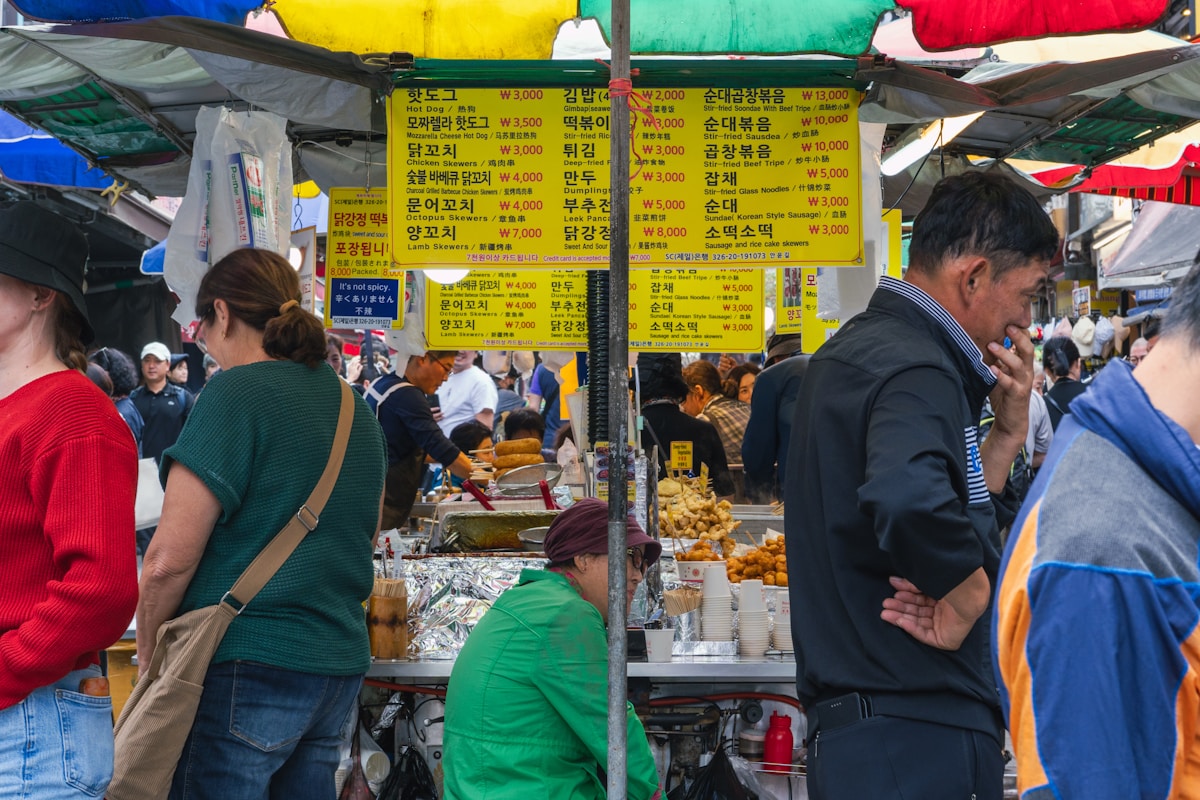
Namdaemun Market, Korea’s largest traditional marketplace dating back to 1414, offers visitors a free journey through history with over 10,000 shops packed into its labyrinthine alleys.
Wanderers can admire everything from handcrafted souvenirs and traditional clothing to street food stalls and household goods without spending a single won.
The market’s lively atmosphere comes alive through its multi-generational vendors, many of whom have maintained family businesses for decades, preserving authentic Korean commerce traditions while showcasing their unique wares.
1. Sightseeing at Korea’s Largest Traditional Market
For those seeking an authentic glimpse into Korean commerce and culture, Seoul’s Namdaemun Market stands as a lively tribute to the city’s trading heritage dating back over 600 years.
- Explore 10,000+ stalls selling everything from handcrafted souvenirs to fresh local produce
- Watch skilled artisans create traditional goods in their workshops
- Sample free food tastings from vendors enthusiastic to share Korean culinary specialties
2. Unique Shops and Historic Vendors
Hidden among the labyrinthine passageways of Namdaemun Market, generations-old shops and specialized vendors create the authentic heartbeat of Seoul’s commercial heritage.
Visitors can freely observe craftsmen carving traditional stamps, artisans repairing watches, or metal workers perfecting their trade.
These historic establishments showcase authentic Korean craftsmanship while offering a glimpse into commerce traditions maintained for centuries.
Find Hidden Gems and Non-Touristy Spots in Seoul
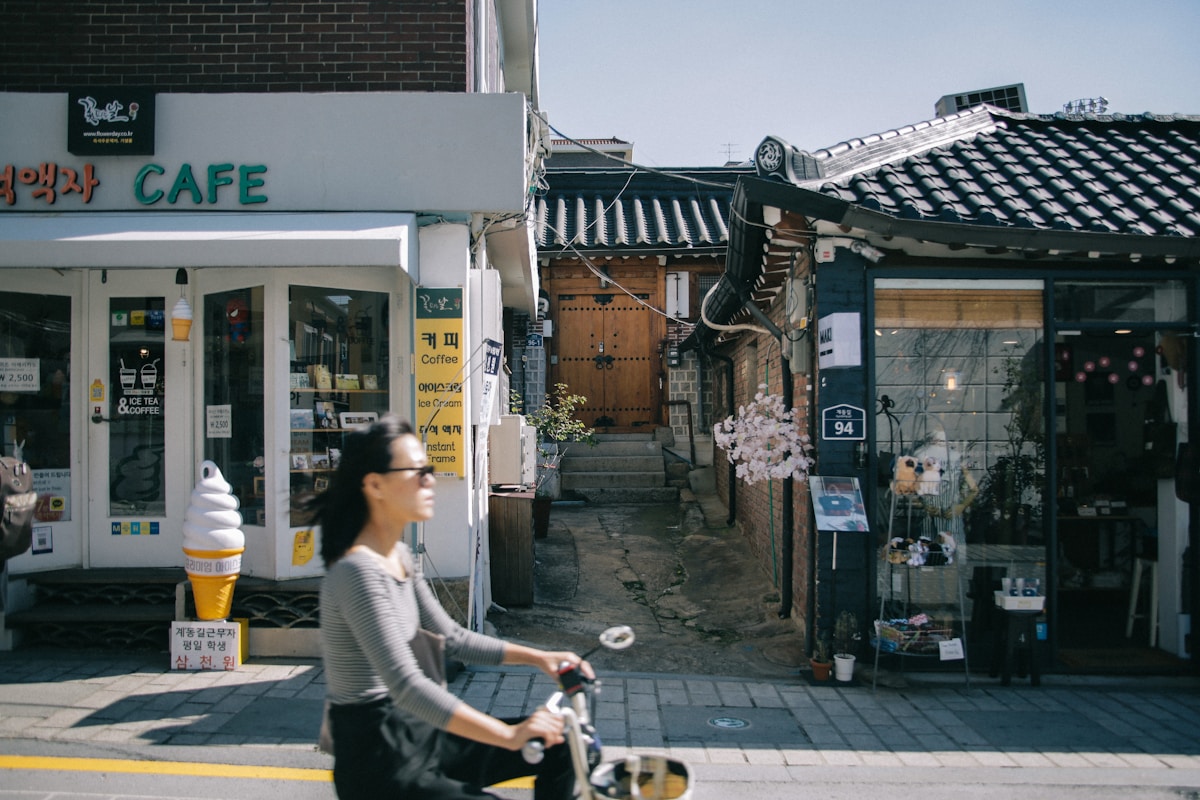
While tourists flock to Myeongdong and Gangnam, Seoul’s authentic soul resides in lesser-known neighborhoods like Seochon, one of the city’s oldest districts with its preserved hanok houses and traditional tea shops.
For art enthusiasts and first-time visitors alike, Ihwa Mural Village is a must-see, an outdoor gallery where vibrant street murals breathe creative life into what was once a declining neighborhood. Here’s everything you need to know for your first visit to make the most of this colorful experience.
These hidden corners of Seoul offer travelers culturally rich experiences without entrance fees, allowing visitors to witness local life unfold in settings rarely featured in mainstream guidebooks.
Explore Seochon, One of Seoul’s Oldest Neighborhoods
Seochon’s quiet streets offer a rejuvenating escape from Seoul’s bustling tourist centers, with family-run cafés tucked between buildings that showcase the neighborhood’s architectural evolution.
Art enthusiasts will appreciate the numerous local galleries featuring works by emerging Korean artists, often housed in renovated hanok buildings that blend traditional elements with contemporary design.
Wandering through this historic district reveals a fascinating juxtaposition of centuries-old tile-roofed homes alongside sleek modern structures, creating a visual timeline of Seoul’s development.
1. Local Art Galleries and Family-Run Cafés
Just west of Gyeongbokgung Palace lies Seochon, where traditional hanok houses and narrow alleyways harbor some of Seoul’s most authentic artistic experiences without costing a single won.
- Hidden galleries showcase emerging local artists’ work, simply wander in and browse.
- Family-run cafés often display rotating exhibitions while offering peaceful observation spots.
- Community art spaces host free workshops and cultural exchanges throughout the week.
2. Quiet Streets With a Blend of Modern and Traditional Architecture
The quiet streets of Seochon reveal a fascinating architectural tapestry where centuries-old hanok homes stand shoulder-to-shoulder with sleek modern structures.
This historic neighborhood offers free exploration through narrow alleyways where time seems suspended.
Visitors can photograph ornate wooden doors, intricate roof tiles, and contemporary artistic additions, all without spending a dime.
Seochon’s visual poetry represents Seoul’s harmonious embrace of past and future.
Visit Ihwa Mural Village for Colorful Street Art
Tucked away on the slopes of Naksan Park, Ihwa Mural Village transforms ordinary concrete walls into a lively open-air gallery with hundreds of colorful murals and installations.
Visitors can wander through narrow hillside alleys where everyday scenes of Korean life are immortalized alongside whimsical characters and optical illusions that make perfect photo opportunities.
The most celebrated works include the “Fish Swimming Through the Alley” staircase, the “Flower Dress Girl” mural, and the metallic “Wings” installation that invites passersby to become part of the art themselves.
1. Wandering Through Hillside Paths With Painted Walls
Nestled in the quiet, hilly neighborhood of Naksan, Ihwa Mural Village represents Seoul’s perfect marriage of urban revival and artistic expression.
Visitors can escape the city’s hustle by exploring winding pathways adorned with colorful murals and installations:
- Discover hidden cafés tucked between painted walls
- Photograph stunning cityscape views from elevated vantage points
- Encounter local artists at work, bringing concrete canvases to life
2. The Best Murals and Art Installations to Check Out
Lively masterpieces await art enthusiasts throughout Ihwa Mural Village, where Seoul’s most impressive street art transforms ordinary walls into extraordinary visual experiences.
Visitors discover everything from whimsical animal portraits to thought-provoking social commentaries hidden among narrow alleyways.
The “Starry Night” homage and colorful butterfly wings offer perfect photo opportunities while showcasing Korean artists’ incredible talent beyond typical tourist circuits.
Best Free Things to Do in Seoul for a Relaxing Experience
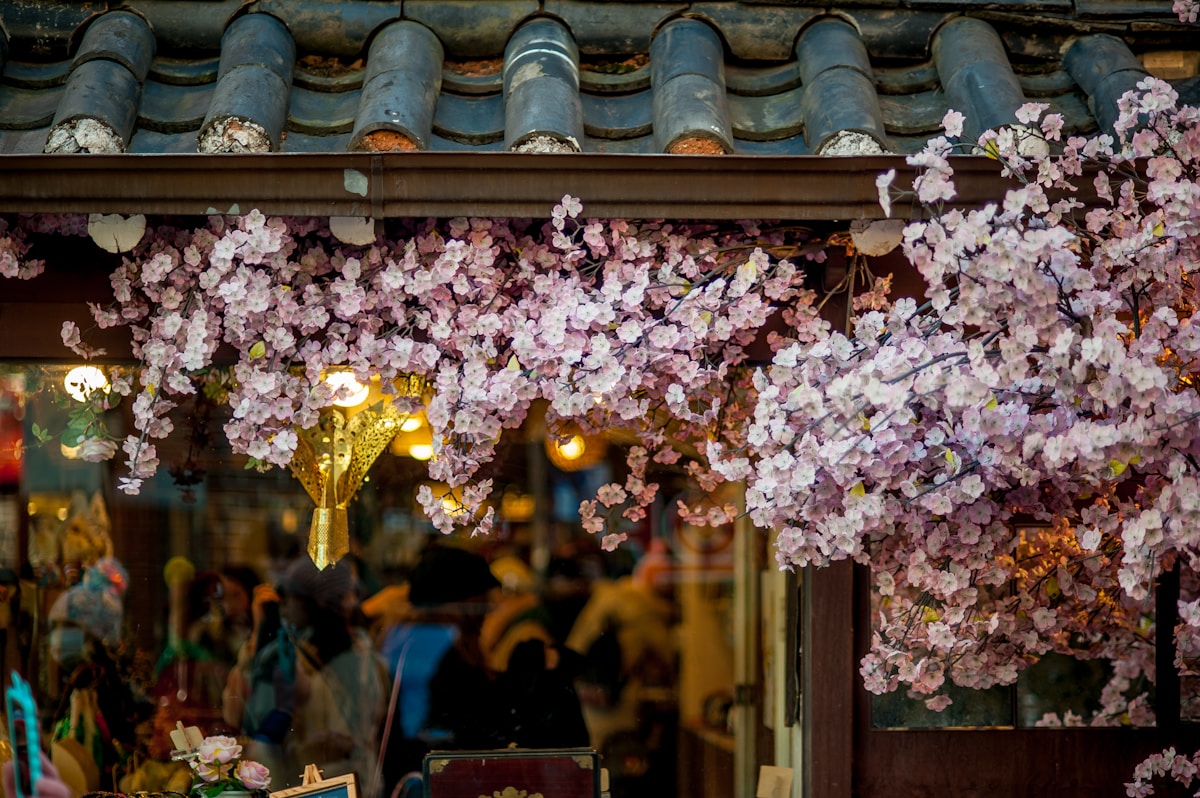
Seoul offers numerous peaceful havens for travelers seeking respite from urban exploration without spending a penny.
Visitors can unwind at traditional Korean teahouses that welcome guests without an entrance fee, where they can sample authentic teas in serene settings often adorned with historic architecture.
The city’s meticulously maintained public parks and gardens, such as Seoul Forest and Yeouido Park, provide tranquil green spaces perfect for meditation, picnics, or simply enjoying nature’s beauty amid the metropolis.
Visit a Traditional Korean Teahouse With No Entry Fee
Seoul’s traditional teahouses offer visitors a chance to experience authentic Korean tea culture without spending a dime on entry fees.
Many of these serene sanctuaries are nestled in historic neighborhoods like Insadong and Bukchon Hanok Village, where centuries-old tea preparation methods are still practiced with reverence.
Visitors can observe the meticulous tea ceremonies, learn about different tea varieties, and enjoy the tranquil atmosphere that provides a perfect retreat from the city’s bustling energy.
1. How to Experience Authentic Korean Tea Culture
When seeking tranquility amid the bustling metropolis, few experiences rival the serene atmosphere of a traditional Korean teahouse.
Visitors can immerse themselves in centuries-old tea traditions without spending a dime.
- Observe tea masters demonstrate authentic brewing techniques
- Sample distinctive Korean teas like yujacha (citron) or saenggang (ginger)
- Learn proper teacup handling and traditional drinking etiquette
2. Best Neighborhoods to Find Hidden Teahouses
Tucked away in the historic corners of South Korea’s lively capital are enchanting neighborhoods where time-honored tea traditions flourish in hidden teahouses that welcome visitors without charging entry fees.
Insadong and Bukchon Hanok Village offer the richest concentration of these serene sanctuaries, while Samcheong-dong’s quaint alleys reveal family-owned gems where traditional brewing methods transport guests to Korea’s contemplative past.
Relax in Seoul’s Public Parks and Gardens
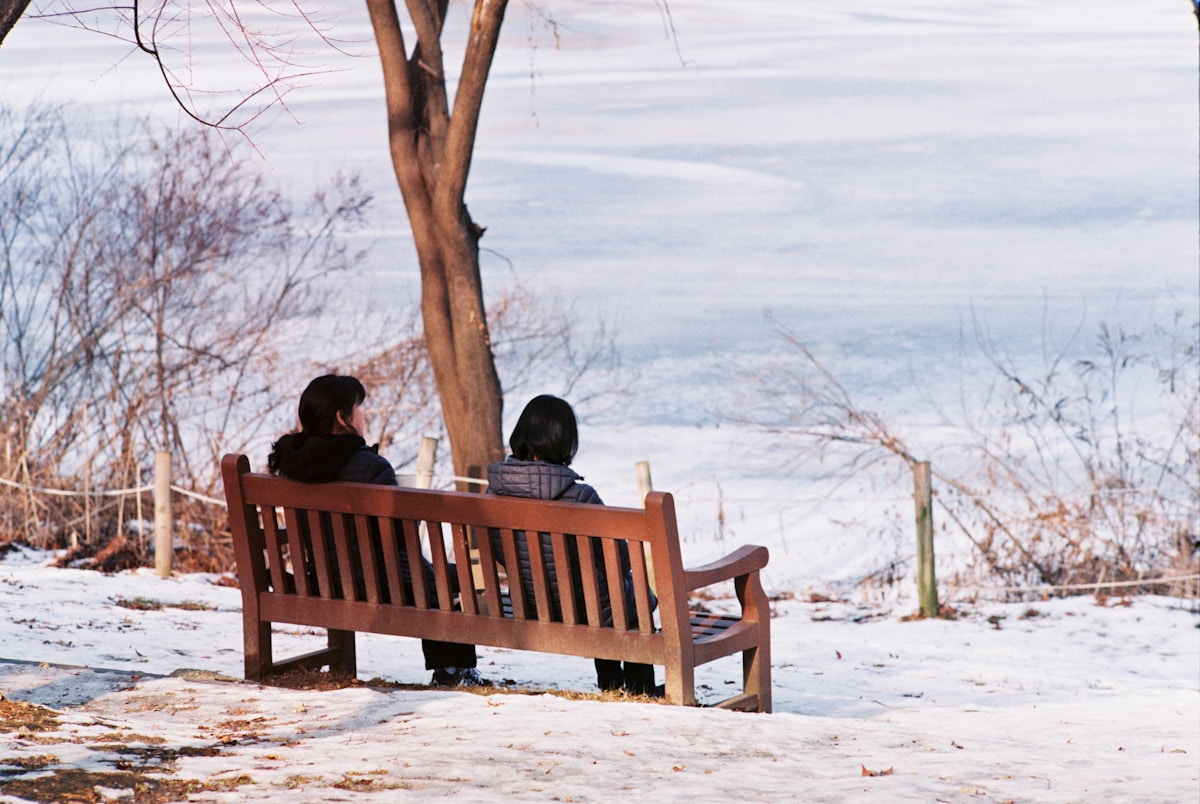
Seoul Forest offers visitors a serene escape with its winding nature trails and charming deer park where visitors can feed the gentle creatures.
Perched atop a former landfill site, Haneul Park rewards those who climb its 291 steps with breathtaking panoramic views of the Han River and Seoul’s dynamic skyline.
These verdant sanctuaries provide perfect respites from the city’s bustling energy, all without costing a single won.
1. Seoul Forest’s Nature Trails and Deer Park
A verdant oasis stretching across 300,000 square meters in the heart of the city, Seoul Forest offers visitors a perfect escape from urban intensity without spending a single won.
- Observe gentle deer in their natural habitat at the Ecological Forest section
- Explore five distinct zones via well-maintained walking and cycling paths
- Discover seasonal beauty, from spring cherry blossoms to autumn’s golden canopy
2. Haneul Park’s Panoramic Views of the Han River
Perched atop a former landfill site, Haneul Park stands as one of Seoul’s most breathtaking green spaces, offering unrivaled 360-degree views of the city skyline and the serene Han River below.
Visitors can wander through swaying fields of silver grass and wildflowers while enjoying this ecological triumph.
The park is especially magical during sunset, when Seoul’s urban landscape transforms into a golden panorama.
Unusual and Unique Free Things to Do in Seoul

Seoul offers several distinctive free attractions that captivate visitors seeking unusual experiences.
The Starfield Library in COEX Mall dazzles with its towering bookshelves housing over 50,000 titles in a striking architectural space that merges literature with modern design.
At Dongdaemun Design Plaza, visitors can wander through ever-changing digital art displays that transform the futuristic Zaha Hadid-designed building into an immersive canvas of light and technology.
Tour the Starfield Library in COEX Mall
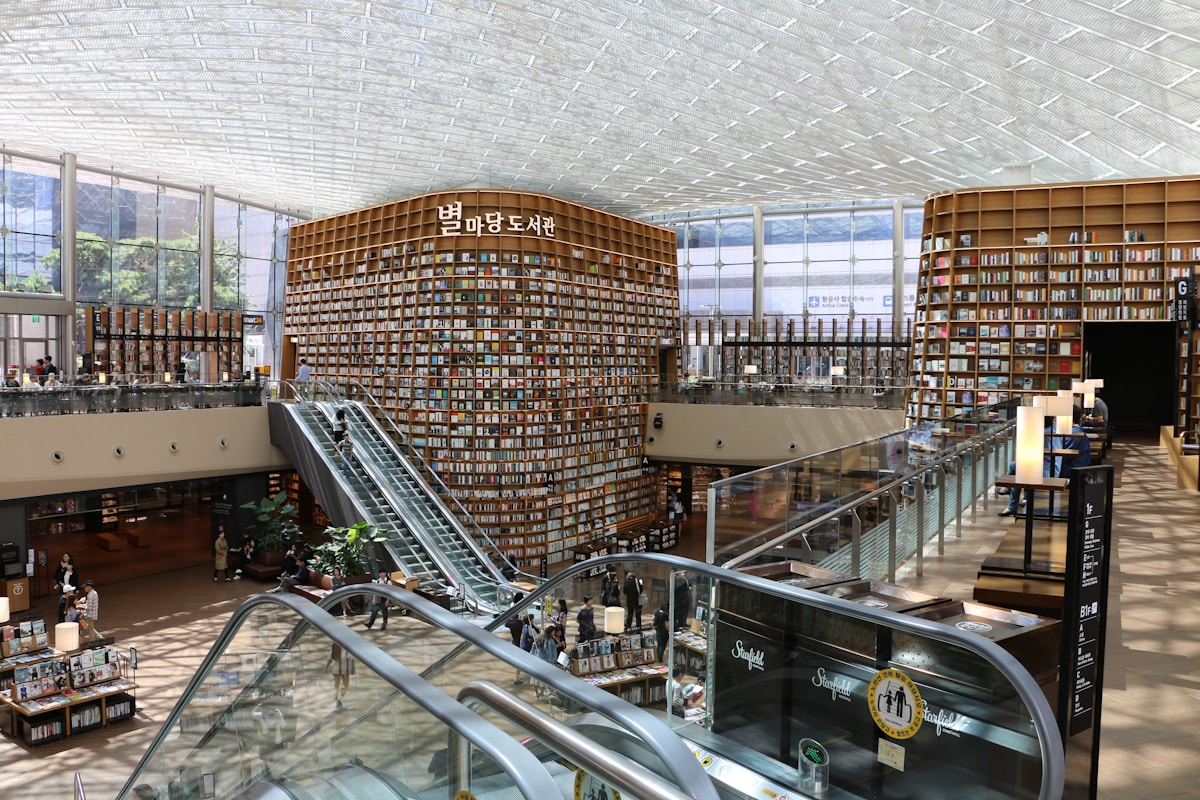
The Starfield Library inside COEX Mall stands as an architectural marvel featuring towering bookshelves that stretch from floor to ceiling, creating a spectacular literary landscape in the heart of Gangnam.
Visitors can relax in the complimentary reading areas scattered throughout the space, where comfortable seating invites both locals and tourists to pause with a good book amid the bustling mall environment.
Photography enthusiasts will find countless angles to capture this Instagram-worthy destination, with its dramatic book-lined walls and modern design elements offering a perfect backdrop for memorable Seoul snapshots.
1. A Giant Public Library With Floor-to-Ceiling Bookshelves
Bibliophiles will find paradise inside COEX Mall at the stunning Starfield Library, where towering 13-meter bookshelves create an architectural marvel unlike any other public reading space in Seoul.
- Browse over 50,000 books spanning countless genres and languages
- Relax in comfortable reading nooks scattered throughout the open-concept space
- Capture Instagram-worthy photos against the backdrop of literary magnificence
2. Free Reading Areas and Photography Spots
Scattered throughout Starfield Library’s open layout, five distinct reading zones offer visitors the chance to immerse themselves in literature without spending a penny.
Photography enthusiasts flock to this literary haven to capture its stunning visual aesthetic.
The floor-to-ceiling bookshelves serve as perfect backdrops for memorable photos, while natural light floods through skylights, creating an ethereal atmosphere unmatched elsewhere in Seoul.
Experience the Digital Art Displays at Dongdaemun Design Plaza

Dongdaemun Design Plaza (DDP) features stunning free light projections and interactive digital installations that transform its exterior spaces after dark into an immersive art experience.
Visitors can wander through the futuristic curved architecture designed by Zaha Hadid, accessing multiple public areas that showcase Seoul’s commitment to innovative design.
The sweeping metallic facades, landscaped rooftop park, and illuminated walkways offer photography enthusiasts and architecture admirers alike plenty to explore without spending a single won.
1. Light Projections and Interactive Installations in Public Spaces
Seoul’s nightscape transforms into a mesmerizing digital canvas at Dongdaemun Design Plaza (DDP), where free light projections and interactive installations illuminate the city’s commitment to public art.
Visitors can experience:
- Ever-changing seasonal projections on DDP’s curved façade
- Touch-responsive light installations allowing creative participation
- Media art tunnels creating immersive walkthrough experiences
These digital displays run nightly from 7pm-11pm.
2. Architectural Highlights That Are Free to Explore
Beyond the digital displays that capture evening crowds, Seoul offers architectural marvels that stand as free open-air museums throughout the city.
Visitors can freely wander Dongdaemun Design Plaza’s futuristic curves, explore Seoullo 7017’s elevated park transformed from a highway, or discover the striking contrast between traditional hanok structures and modern skyscrapers in Bukchon, all without spending a single won.
Wrapping Up
Seoul shines brightest through its free experiences, proving that extraordinary discoveries needn’t come with hefty price tags.
From imperial palaces to mountain-top vistas, traditional markets to cutting-edge art spaces, the city offers countless opportunities to immerse oneself in Korean culture without spending a won.
Travelers who explore these complimentary treasures will discover the authentic soul of Seoul while creating priceless memories.

